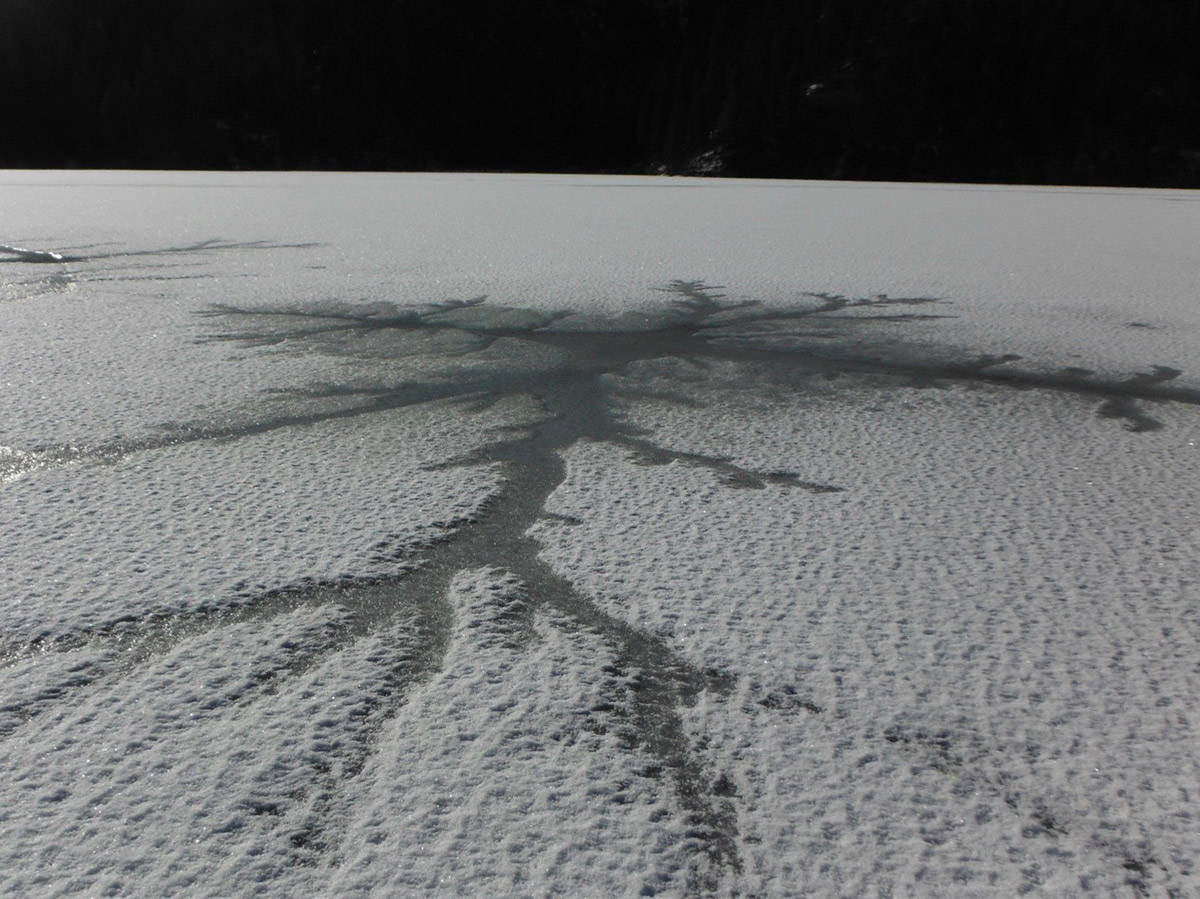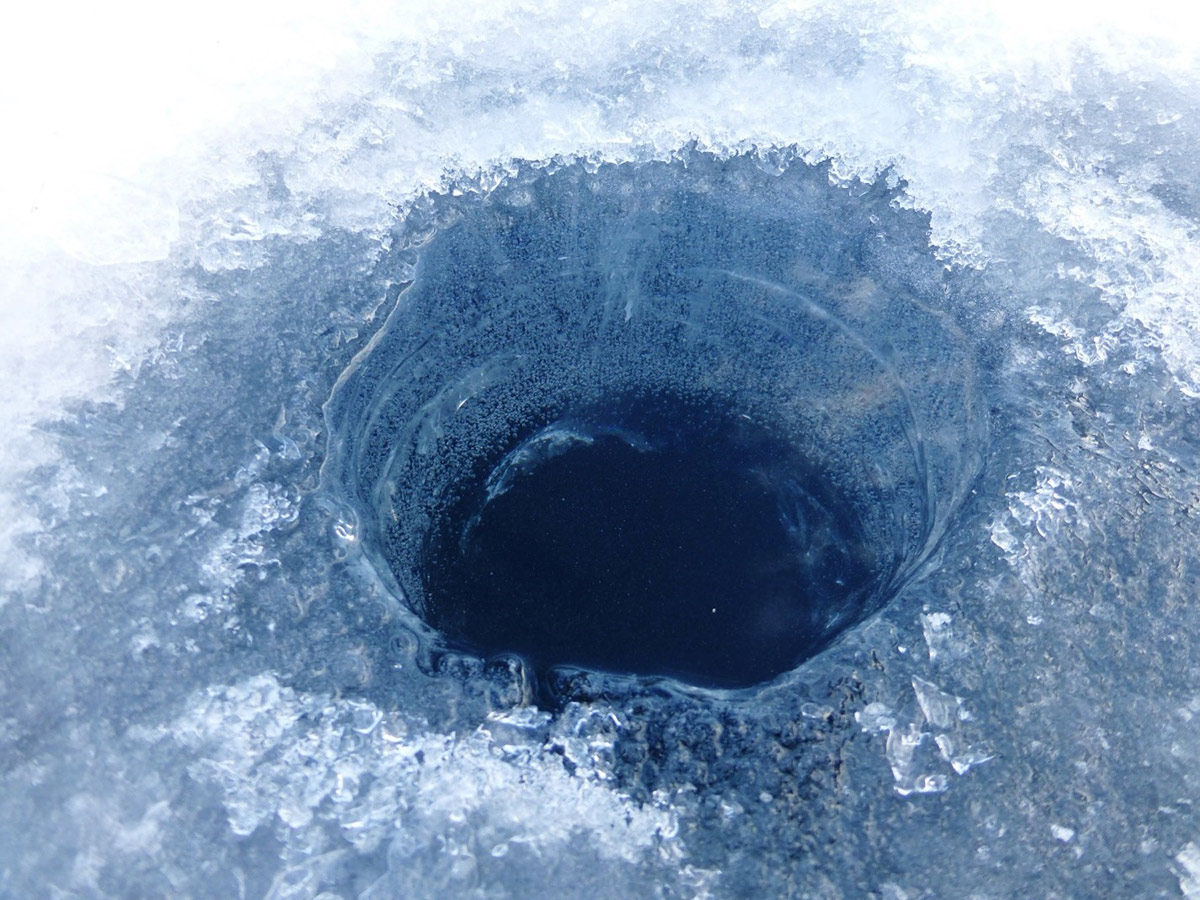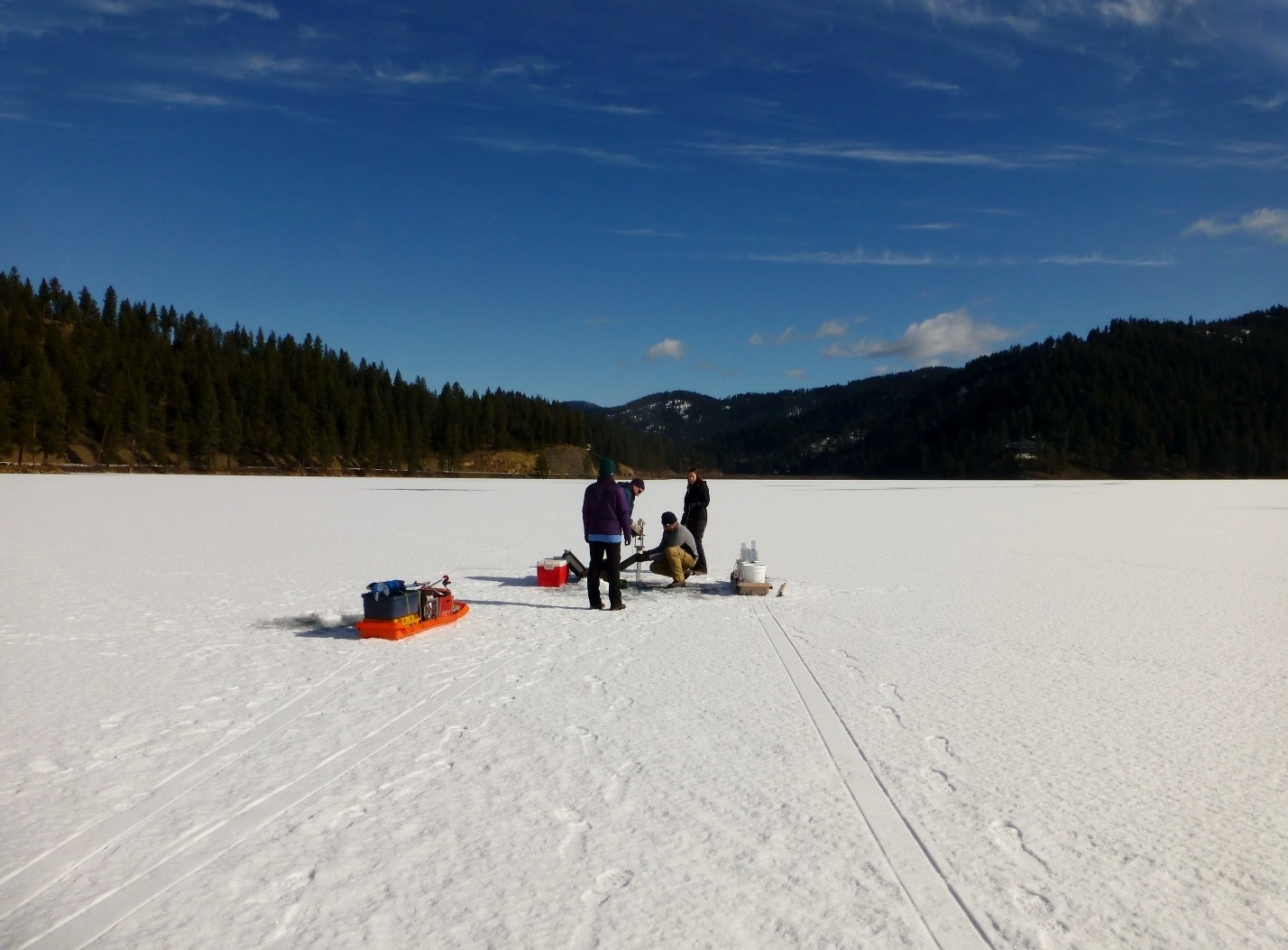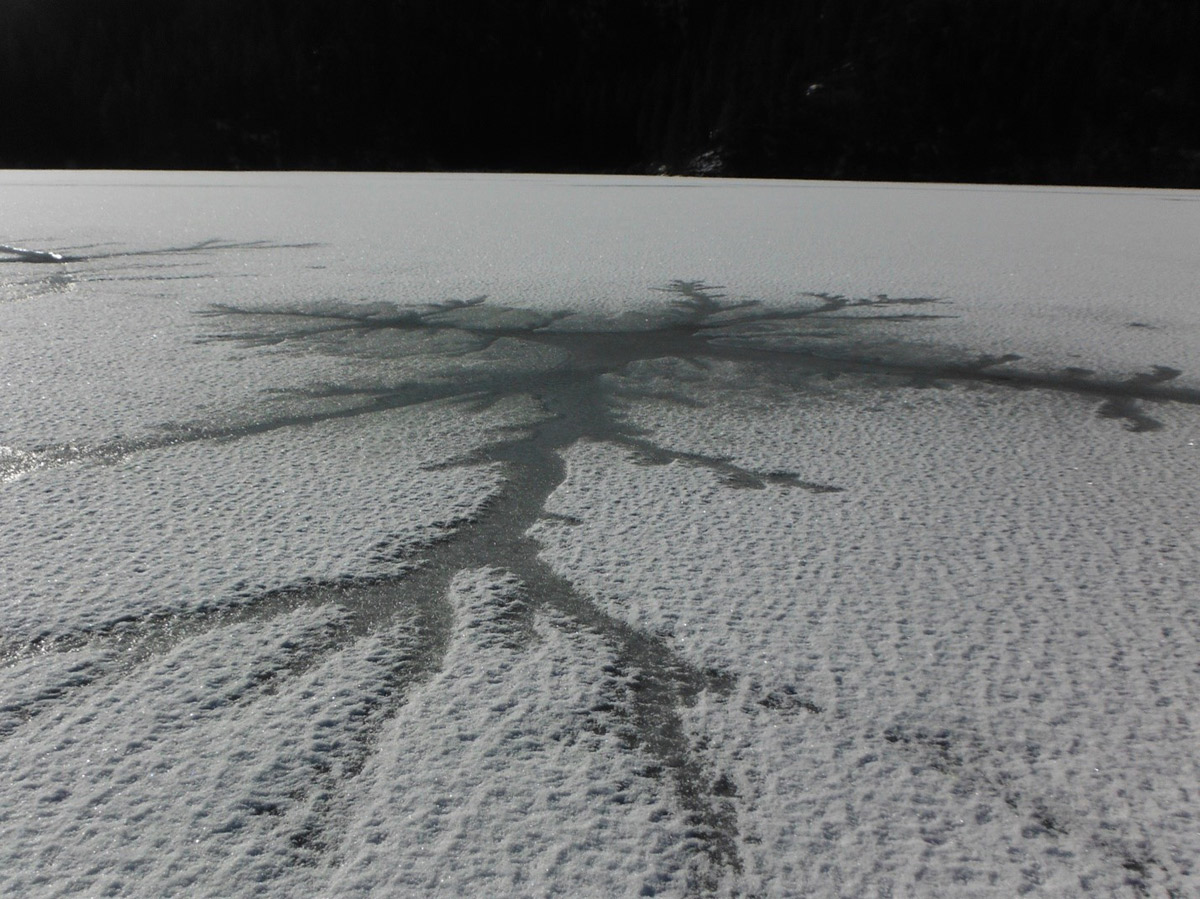What Happens Beneath the Ice?
This story was written by Frank Wilhelm, University of Idaho College of Natural Resources professor, in partnership with the Our Gem Collaborative. It appeared in the CDA Press on Sunday, Feb. 20, 2022. Read the original article.
Did you know that water is less dense as a solid than as a liquid? Because ice is less dense, it floats (think of ice cubes in a glass of water), and consequently, lakes freeze from the top down. This is crucial for the over-winter survival of aquatic organisms. If our lakes froze from the bottom up, all life in them would also freeze solid — not good. While it may be hard to imagine, ice is also an insulator, so once a water body is ice-covered, the ice insulates the water below from extreme air temperatures, also preventing it from freezing solid and guaranteeing a refuge for the aquatic critters.
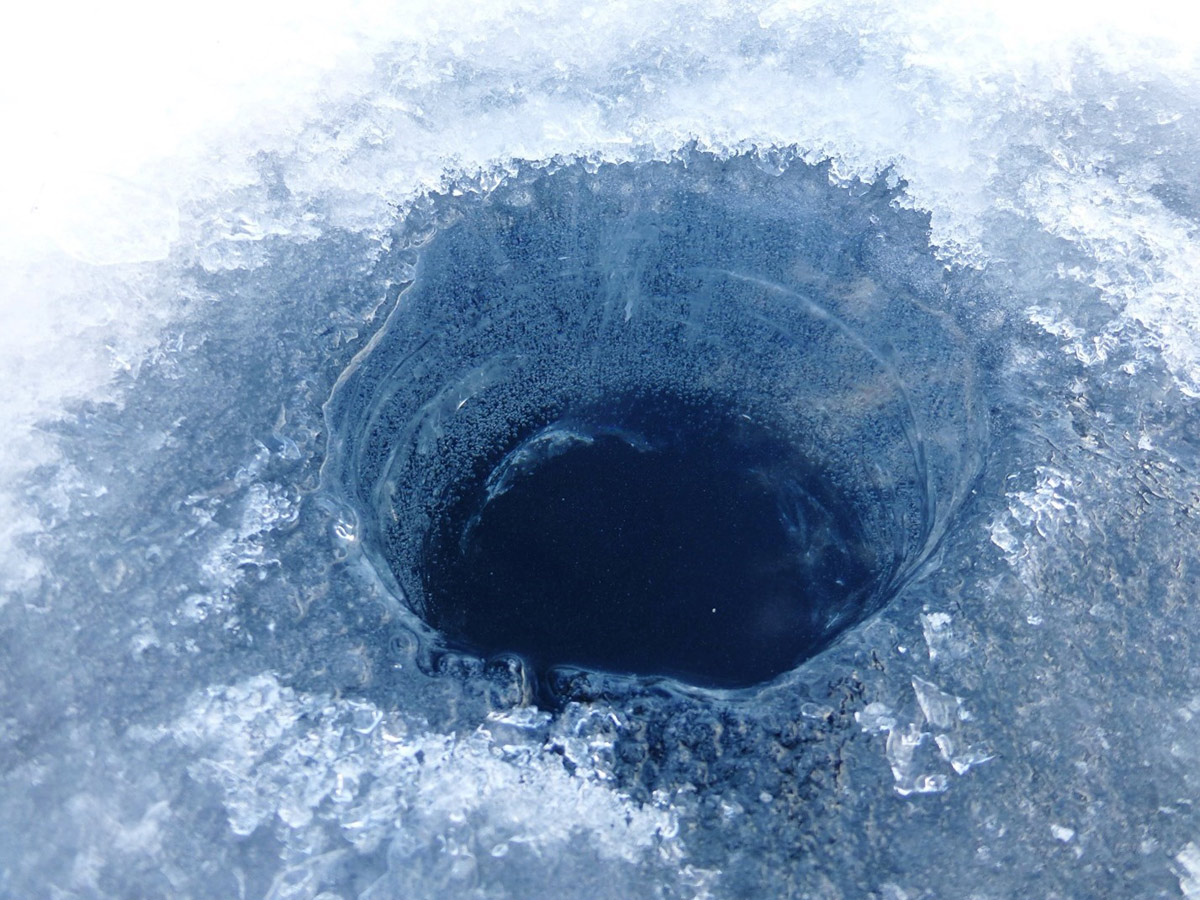
Make no mistake, life continues under the ice — albeit at a much slower pace than in summer. While sunlight can easily penetrate through black ice, white ice or snow accumulation can limit light available for plants to photosynthesize and produce oxygen. Luckily, fish are cold blooded, meaning their body temperature matches their environment. Cold water slows their metabolism, and therefore slowing respiration, digestion, and activity level. Some fish may seek the warmest water available, at the lake bottom and enter a state of torpor using as little energy as possible.
Let’s explore ice types. Black ice is very strong and crystal-clear, forming first when a lake freezes in winter. As air temperature drops, lake water cools, becoming less dense and floating on the surface until ice crystals form — typically radiating outward from shore. Continuous air temperatures below freezing cause ice to thicken downward. It’s amazing how large of an area can freeze over in a single night.
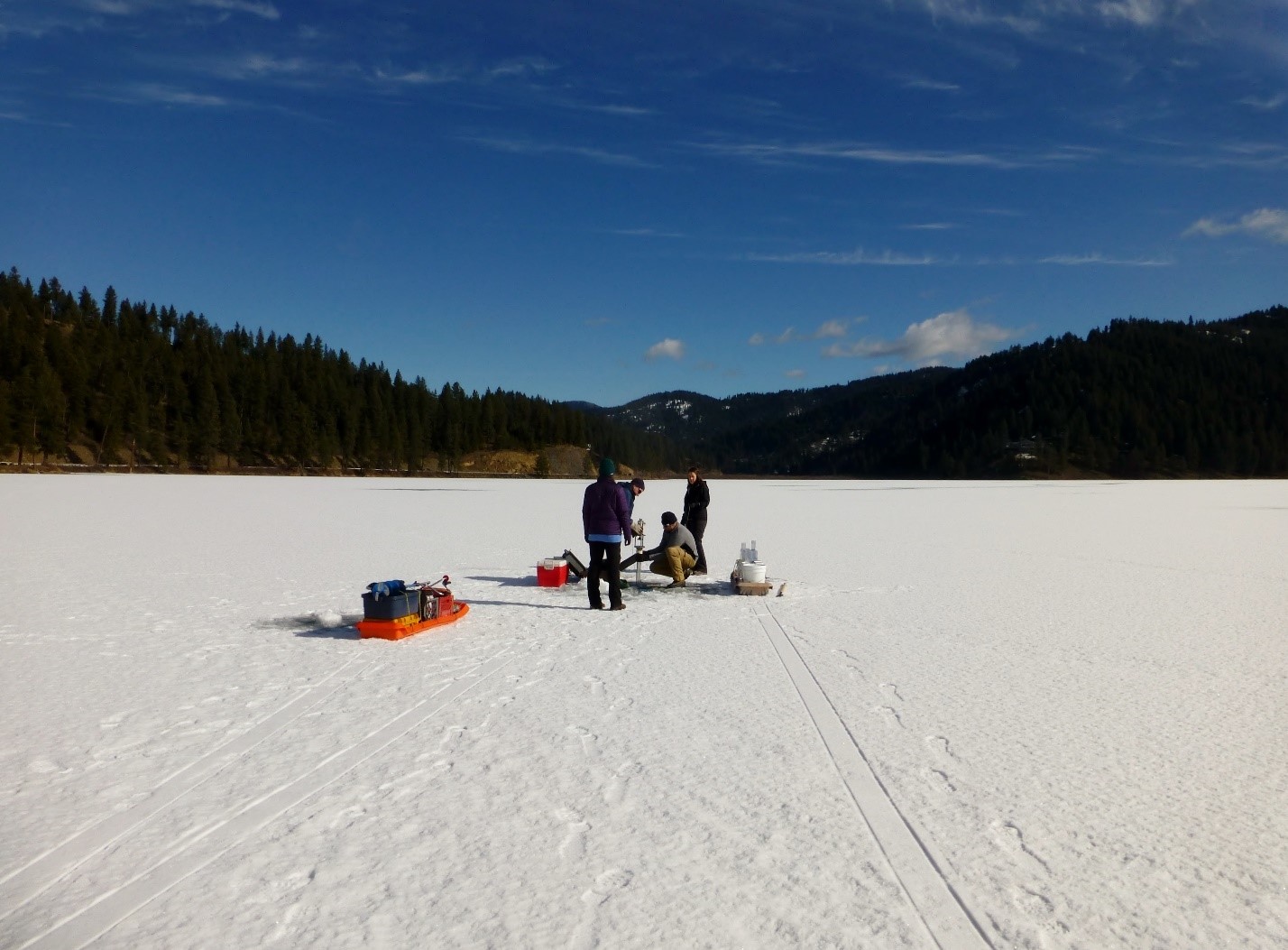
White ice is much weaker than black ice and forms upward from black ice. The accumulation of snow on ice, like on your roof, is heavy and weighs the ice down causing it bend downward. This causes pressure cracks to open, allowing water to seep upward creating a giant slush puddle. The re-freezing of this slushy snow is what makes white ice.
Planning to venture out on the frozen landscape? Always make sure that ice is safe to support you by measuring the thickness of an auger hole. An ice thickness of 4” is generally safe for walking and ice fishing, 5-6” for snowmobiling/ATVs, and 8-12” for small cars and trucks, but remember no ice is 100% safe and caution should always be taken. With changing weather trends, even smaller lakes like Fernan may not freeze over completely, or the ice may not be as thick and safe as usual so beware! Never go on ice alone and always let someone else know where you’re going and when you expect to return. If you’re in a group, distribute your weight by spreading out. Enjoy our beautiful Idaho lakes year-round, whether they’re flowing or frozen!
